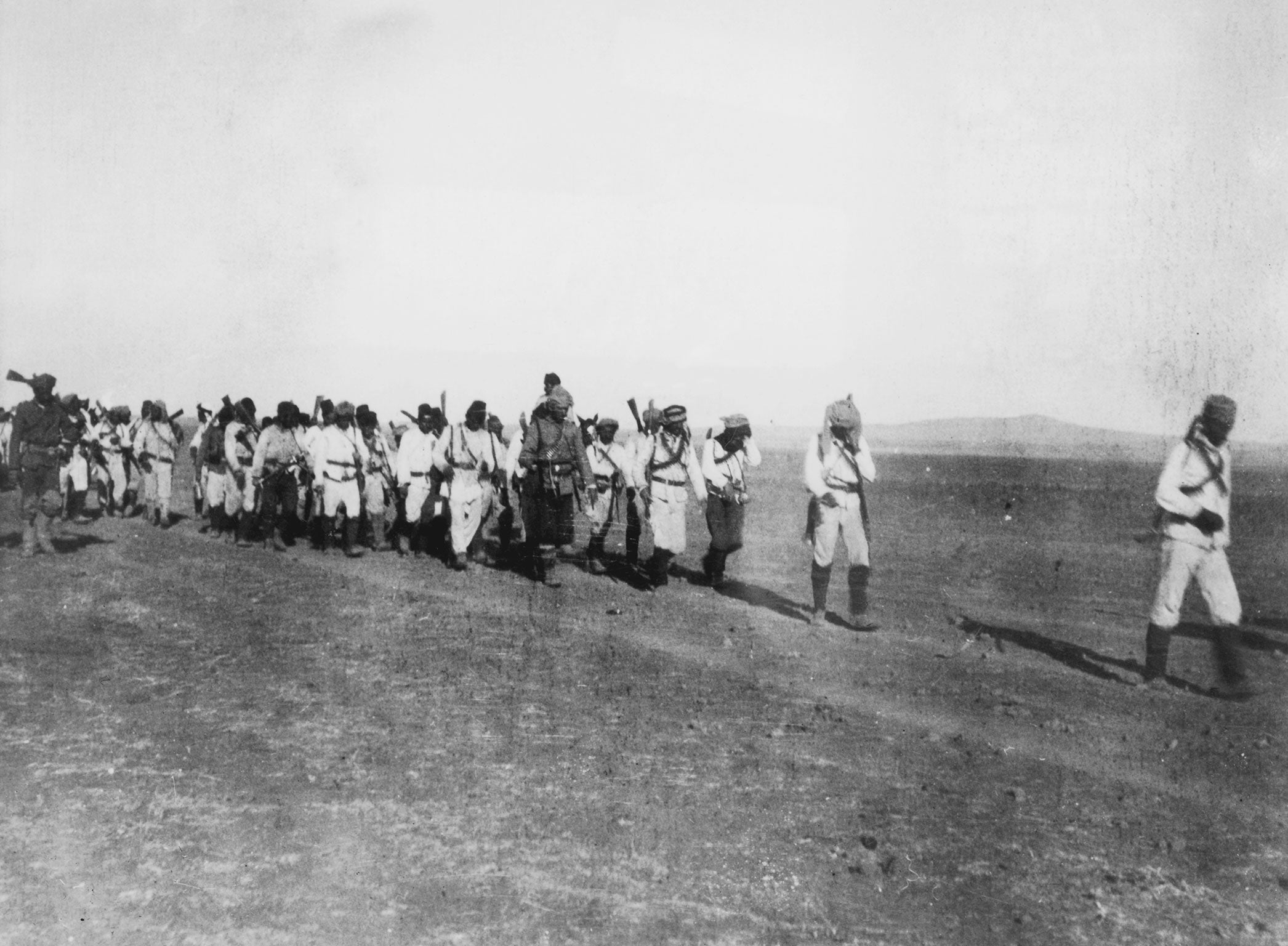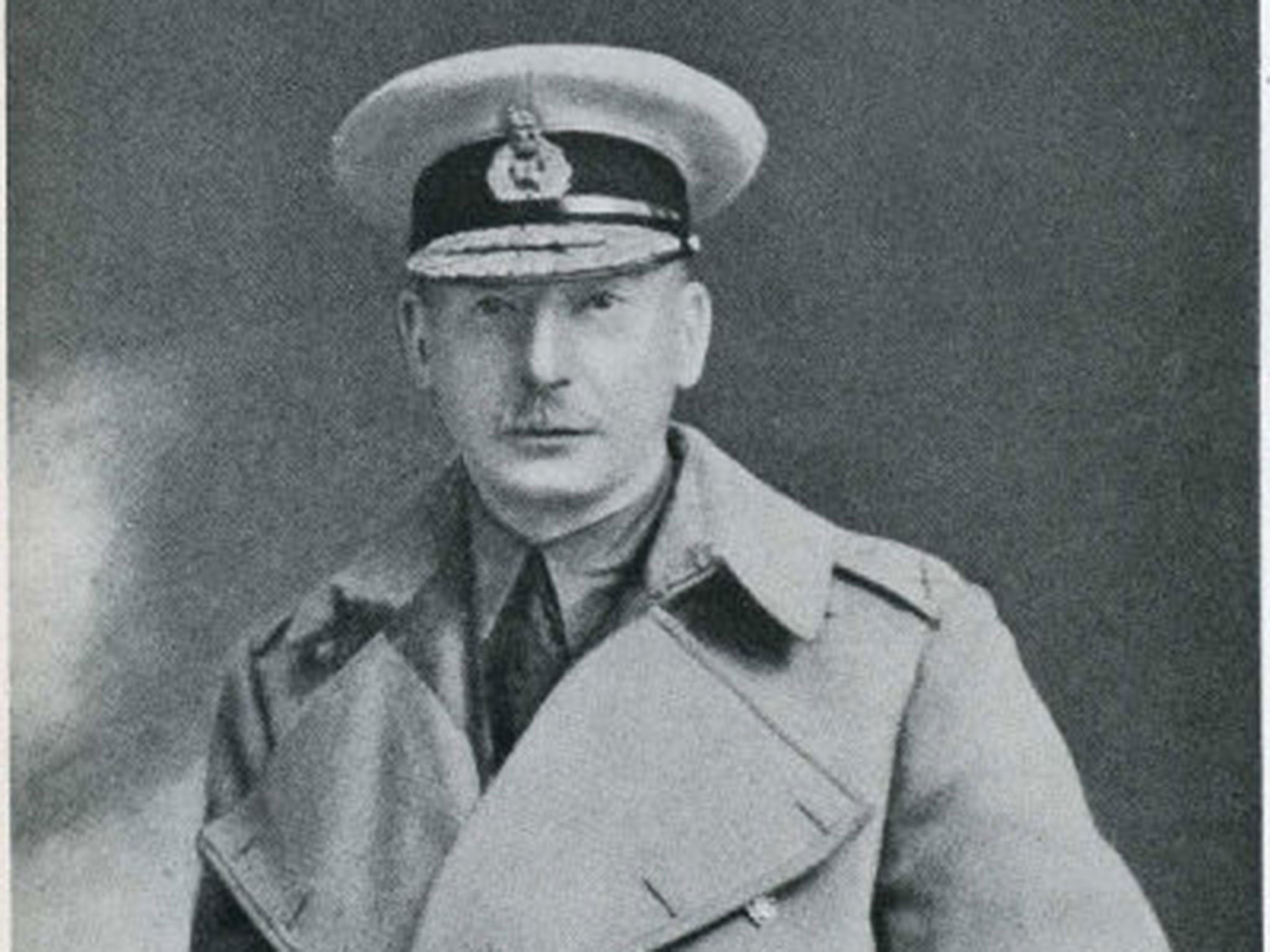A History of the First World War in 100 Moments: Shambles on the Tigris - a general’s complacency and an abject surrender
Besieged in Mesopotamia, General Sir Charles Townshend allowed a crisis to turn into a catastrophe. Patrick Cockburn on one of Britain’s great military disasters

Your support helps us to tell the story
From reproductive rights to climate change to Big Tech, The Independent is on the ground when the story is developing. Whether it's investigating the financials of Elon Musk's pro-Trump PAC or producing our latest documentary, 'The A Word', which shines a light on the American women fighting for reproductive rights, we know how important it is to parse out the facts from the messaging.
At such a critical moment in US history, we need reporters on the ground. Your donation allows us to keep sending journalists to speak to both sides of the story.
The Independent is trusted by Americans across the entire political spectrum. And unlike many other quality news outlets, we choose not to lock Americans out of our reporting and analysis with paywalls. We believe quality journalism should be available to everyone, paid for by those who can afford it.
Your support makes all the difference.In the British military cemetery at Kut on the Tigris River 100 miles south of Baghdad, the tops of the tombstones used to be only just visible as they stuck out of a swamp full of small green frogs. A broken cement cross rose over a reed bed in the middle of the slimy water. Here in the middle of Kut, a poor dusty city built on a bend in the Tigris, are buried 500 British soldiers who died in the siege of the city in 1915-16.
The siege was part of a military campaign against the Turks that is largely forgotten, but should, even by the grim standards of the First World War, be a byword for terrible suffering inflicted on British soldiers by the incompetence, arrogance and ignorance of their commanders. Here and elsewhere in Iraq are buried the remains of some 40,000 British and Indian soldiers killed in 1914-18.
In most countries military cemeteries are carefully maintained places of solitude and grief, but in Iraq not even the dead rest in peace. When I saw Kut cemetery in 1998 it impressed me as a desolate symbol of a country collapsing into poverty and crime under the weight of military defeat and economic sanctions. I went back there last year and found that the swamp had been drained and the frogs were gone, but so too had most of the headstones with only the broken cross remaining.

Local people in Kut were respectful of my interest in the cemetery in the heart of their city, but were mystified about the conflict in which the soldiers had died. Iraqi school books give little mention to the war between the British and the Turks that raged up and down their country a century ago in which the Arab population were spectators whose main interest was in plundering the battlefields. Many in Kut believed the people buried in the cemetery had been killed in the Arab uprising against the British occupation in 1920.
There is less excuse for the British to know so little about the catastrophic campaign in 1915 when a small British force numbering some 13,000 men tried and failed to capture Baghdad. They had originally been landed in the far south of the country to prevent the Turkish army from disrupting crucial oil supplies from Iran. British generals on the spot, backed by their superiors in London and India, underestimated the Turks and wanted to win a cheap victory to counterbalance bad news from Gallipoli.
A British army under General Sir Charles Townshend advanced 300 miles from Basra to within a few miles of Baghdad. After suffering heavy losses, Townshend, an egomaniac obsessed with his own reputation, retreated to Kut in December 1915 where he was besieged for 147 days until he surrendered on 29 April 1916. Every blunder that could be committed was committed with terrible and unnecessary suffering inflicted on British and Indian troops. In terms of military failure, the siege of Kut was the First World War’s equivalent of the fall of Singapore in 1942.
Townshend lied about how much food he had to feed his soldiers, apparently hoping to encourage the swift relief of his force. This led to a series of disastrously premature attacks in which 23,000 British and Indian soldiers were killed or wounded. The Turkish army was tougher than it looked and this part of Iraq is bleak salt marsh which floods when the Tigris and Euphrates rise.
Wounded soldiers could end up spending two weeks lying close-packed and unattended on the decks of river vessels going to Basra while their wounds turned gangrenous and filled with maggots. Townshend forbade his troops from sending messages to their families by wireless, but sent frequent ones on his own behalf demanding promotion. He made no attempt to break through the Turkish siege lines.
The tragedy did not end with Townshend’s surrender. He went off to comfortable captivity on an island in the Sea of Marmara, showing more concern for the fate of his dog Spot than for the soldiers he left behind. Few officers stayed with their men, whom the Turks sent on a 1,300-mile forced march from Kut to Turkey. The soldiers died in their thousands of starvation, thirst, mistreatment and execution as well as diseases like typhus and cholera.
When survivors arrived in the Taurus Mountains for forced labour building a railway tunnel, Armenians already there, the few still alive after the mass slaughter of their people, were shocked by the plight of the skeleton-like figures who staggered into their camp. Overall, 70 per cent of the British and 50 per cent of the Indian soldiers who surrendered at Kut died in captivity.
All British military cemeteries are sad but few convey the same sense of melancholy and futility as those in Iraq. One that has survived best is in Baghdad in the Wazariya district of the city with a mausoleum at its centre to General Sir Frederick Maude who died of cholera soon after capturing the city in 1917. This was well maintained until Britain joined the invasion of Iraq in 2003, when it became too dangerous to water the grass between the tombstones that became burned brown by the scorching sun. Visiting became impossible after a bomb close to the entrance to the cemetery killed dozens of people.
In the summer of 2003 I was in al-Amara, the city which had been the launching point for British attacks on the Turkish trenches in repeated doomed attempts to relieve Kut. I was there because six British military policemen had been killed by an enraged Iraqi crowd in a town called Majar al-Kabir.
One day I saw a broken arch that did not look Iraqi and, when I went to see what it was, I found that it marked a British military cemetery where hundreds of soldiers had been buried, though the tombstones had mostly disappeared and the site had become a dumping ground for disused buses which were rusting away.
Tomorrow: Last letter to a sweetheart
The '100 Moments' already published can be seen at: independent.co.uk/greatwar